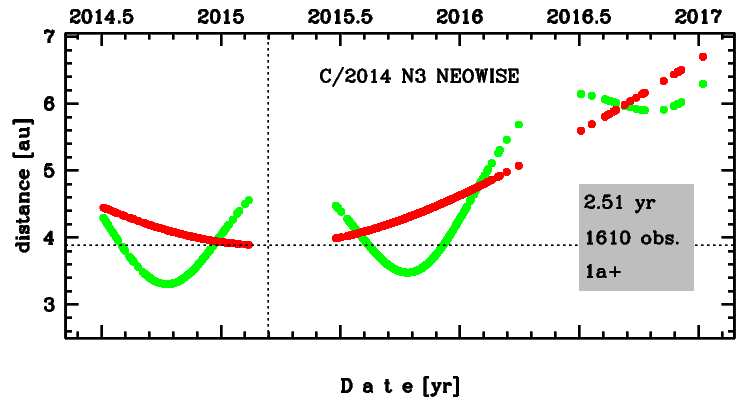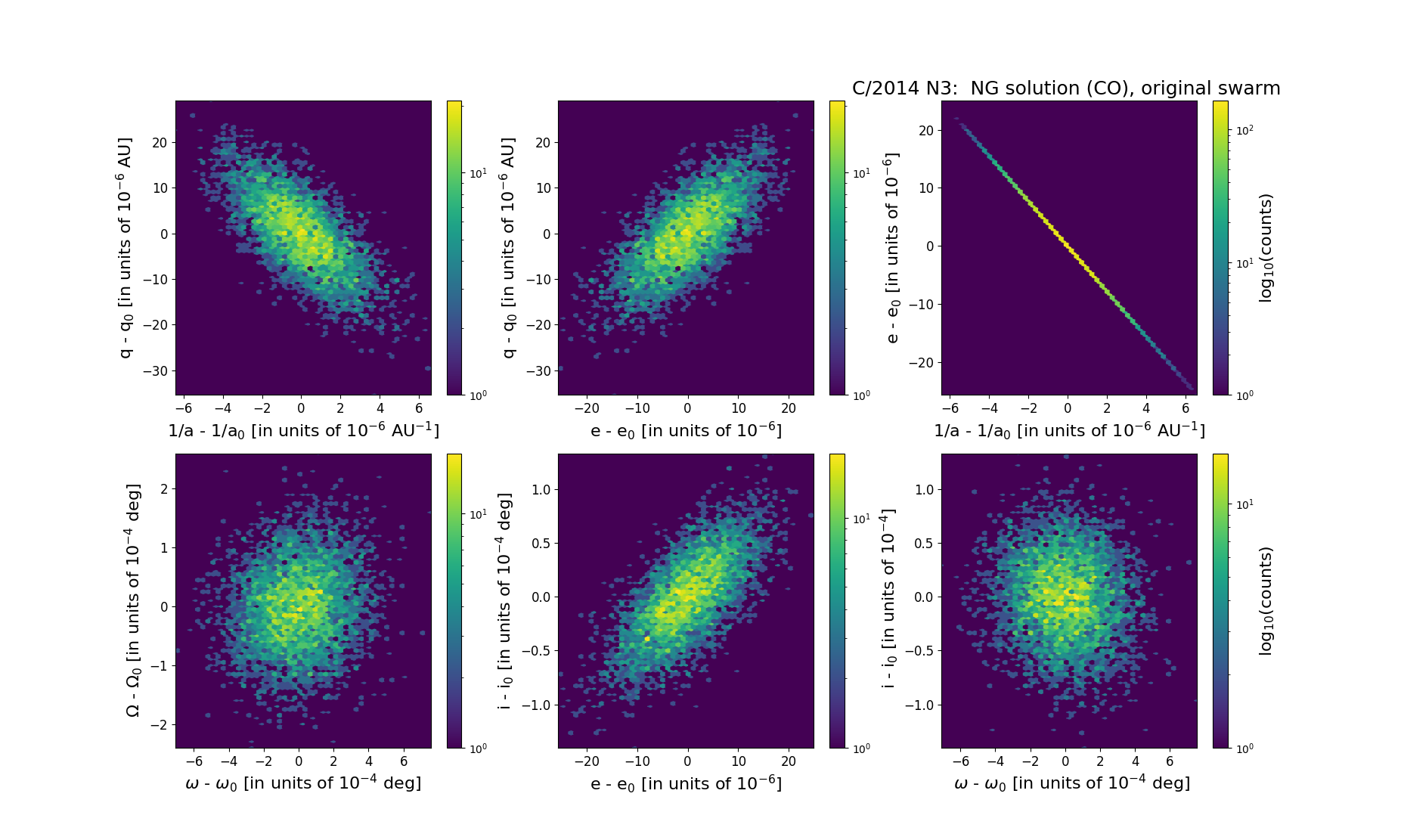C/2014 N3 NEOWISE
more info
Comet C/2014 N3 was discovered on 4 July 2014 with Near-Earth Object Wide-field Infrared Survey Explorer, that is more than 8 months before its perihelion passage. This comet was observed until 6 January 2017.
Comet had its closest approach to the Earth on 9 October 2014 (3.30 au), five months before perihelion passage.
Solutions given here are based on data spanning over 2.51 yr in a range of heliocentric distances: 4.45 au – 3.882 au (perihelion) – 6.70 au.
This Oort spike comet suffers moderate planetary perturbations during its passage through the planetary system; these perturbations lead to a more tight future orbit (see future barycentric orbits).
Comet had its closest approach to the Earth on 9 October 2014 (3.30 au), five months before perihelion passage.
Solutions given here are based on data spanning over 2.51 yr in a range of heliocentric distances: 4.45 au – 3.882 au (perihelion) – 6.70 au.
This Oort spike comet suffers moderate planetary perturbations during its passage through the planetary system; these perturbations lead to a more tight future orbit (see future barycentric orbits).
| solution description | ||
|---|---|---|
| number of observations | 1610 | |
| data interval | 2014 07 04 – 2017 01 06 | |
| data type | perihelion within the observation arc (FULL) | |
| data arc selection | entire data set (STD) | |
| range of heliocentric distances | 4.45 au – 3.88 au (perihelion) – 6.7 au | |
| type of model of motion | NC - non-gravitational orbits for symmetric CO-g(r)-like function | |
| data weighting | YES | |
| number of residuals | 3164 | |
| RMS [arcseconds] | 0.38 | |
| orbit quality class | 1a+ | |
| orbital elements (barycentric ecliptic J2000) | ||
|---|---|---|
| Epoch | 1711 07 31 | |
| perihelion date | 2015 03 12.78956030 | ± 0.00092546 |
| perihelion distance [au] | 3.88613187 | ± 0.00000791 |
| eccentricity | 0.99986002 | ± 0.00000703 |
| argument of perihelion [°] | 353.513256 | ± 0.000189 |
| ascending node [°] | 19.916755 | ± 0.000067 |
| inclination [°] | 61.608521 | ± 0.000037 |
| reciprocal semi-major axis [10-6 au-1] | 36.02 | ± 1.81 |
| file containing 5001 VCs swarm |
|---|
| 2014n3c4.bmi |

